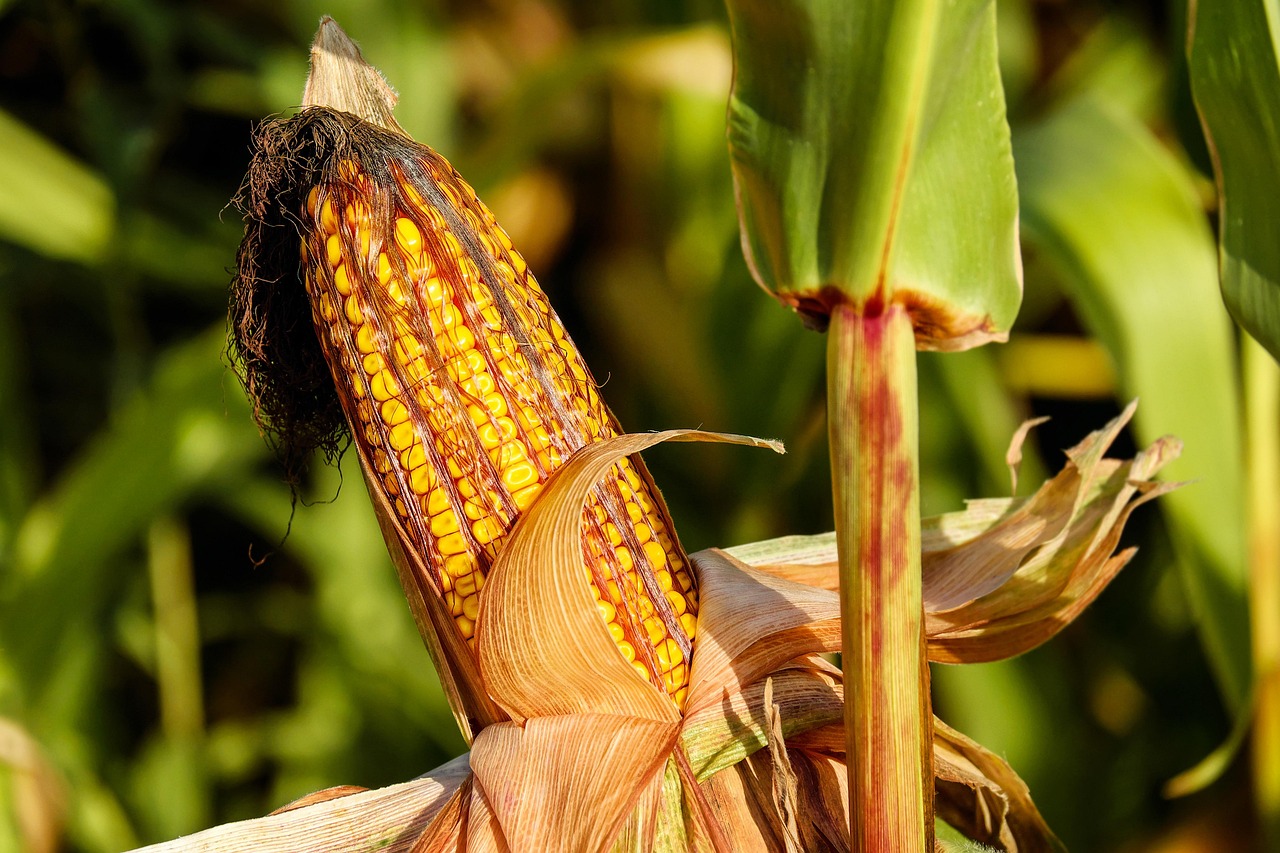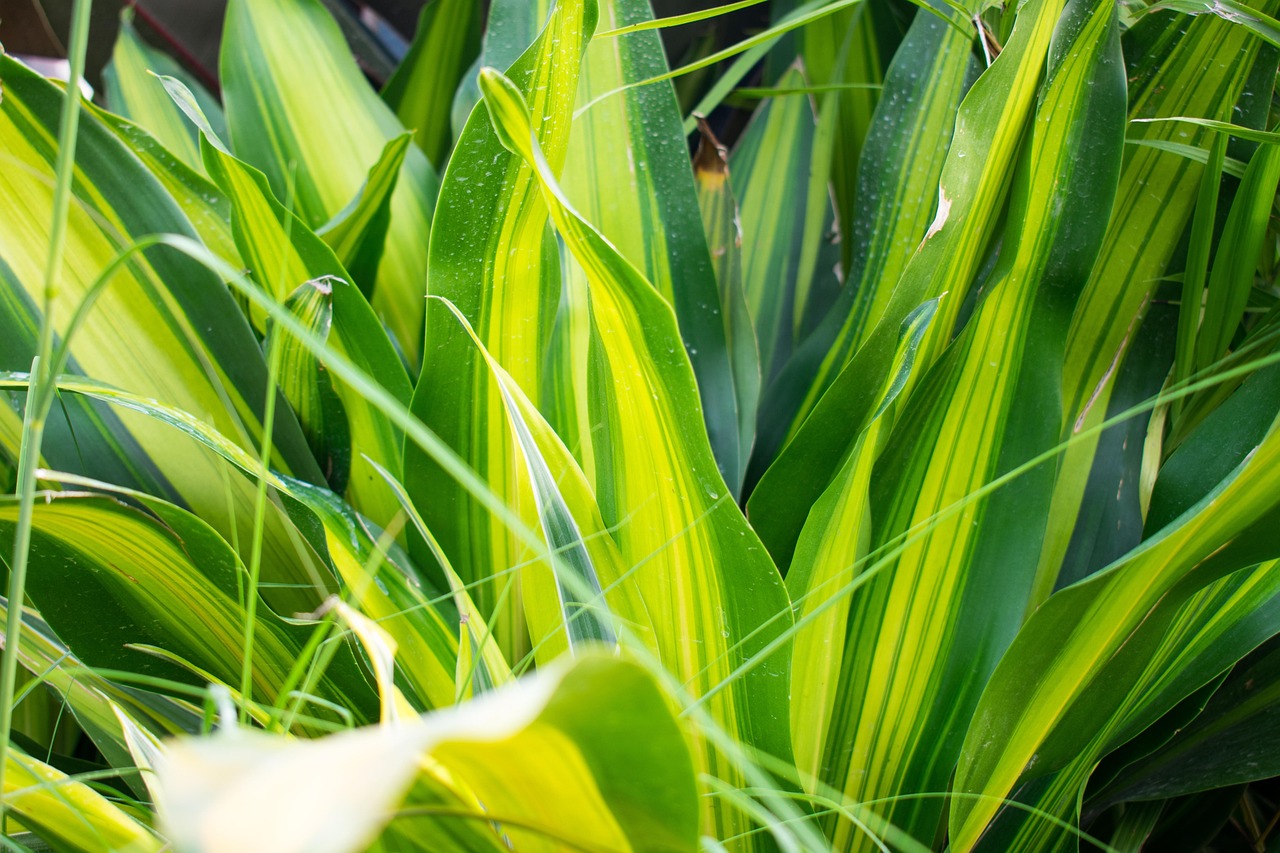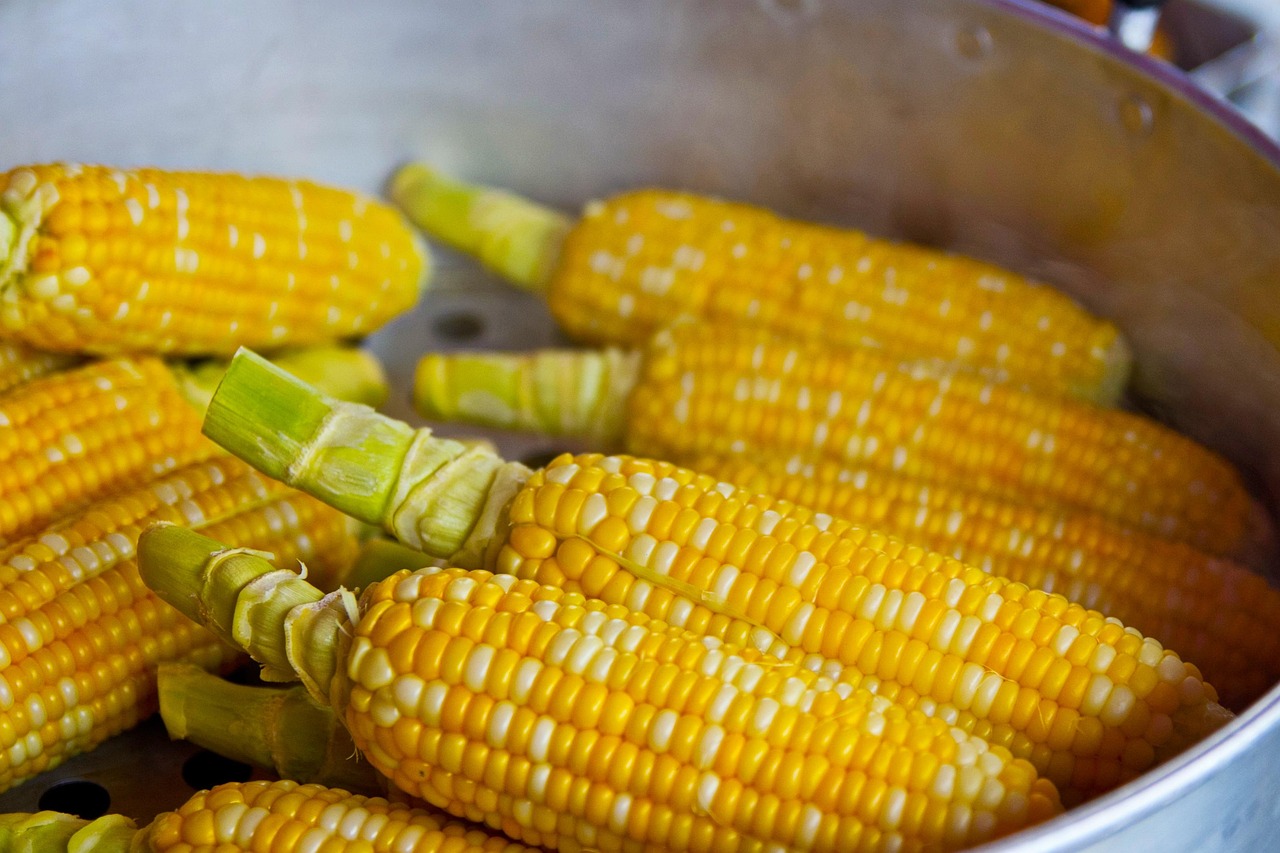To grow and care for Dracaena corn plants indoors, provide bright, indirect light and well-draining soil. Water when the top inch of soil feels dry, and maintain a warm environment with temperatures between 65°F and 80°F. Fertilize every few months during the growing season for best results.
Dracaena corn plants, also known as Dracaena fragrans, are popular houseplants known for their striking appearance and air-purifying qualities. Originating from tropical Africa, these plants can reach impressive heights, making them a favored choice for indoor spaces. With their long, arching leaves and upright growth habit, they can add a touch of elegance to any room.

These plants are relatively easy to care for, making them suitable for both novice and experienced plant enthusiasts. Understanding their light, water, and soil requirements is crucial for successful growth. Additionally, knowing how to address potential issues such as pests or diseases can help you maintain a healthy plant.
Light Requirements
Dracaena corn plants thrive in bright, indirect light but can adapt to lower light conditions. However, insufficient light can lead to slow growth and loss of vibrancy in the leaves. It is essential to avoid direct sunlight, as this can scorch the leaves.
- Ideal Light: Bright, indirect sunlight
- Low Light Tolerance: Can survive in lower light but may not grow as quickly
- Avoid: Direct sunlight to prevent leaf burn
When placing your Dracaena corn plant indoors, choose a location near a window that filters sunlight. If you notice the leaves starting to yellow or drop, it may be a sign that the plant is not receiving enough light.

Watering Guidelines
Watering is one of the most critical aspects of Dracaena care. These plants prefer to dry out between watering sessions. Overwatering can lead to root rot, which is detrimental to the plant’s health.
Here’s a simple guideline for watering:
- Check the soil moisture: Stick your finger about an inch into the soil.
- If it feels dry, it’s time to water.
- Water thoroughly until excess drains from the bottom.
During the growing season (spring and summer), you may need to water more frequently. In the fall and winter months, reduce watering as the plant enters a dormant phase. Always ensure that the pot has drainage holes to allow excess water to escape.

Soil and Potting
Choosing the right soil mix is vital for Dracaena corn plants. A well-draining potting mix helps prevent water retention around the roots. A standard houseplant potting mix works well, but you can enhance drainage by adding perlite or coarse sand.
When potting your Dracaena corn plant, consider these factors:
- Container Size: Choose a pot that is slightly larger than the root ball.
- Drainage: Ensure there are drainage holes at the bottom of the pot.
- Repotting: Repot every couple of years or when the roots outgrow the pot.
Temperature and Humidity
Dracaena corn plants prefer a warm environment. The ideal temperature range is between 65°F and 80°F. They can tolerate occasional drops in temperature but should be kept away from cold drafts and extreme temperature fluctuations.

In terms of humidity, Dracaena corn plants do well in average household humidity levels. However, if your home is particularly dry, especially in winter, consider misting the leaves occasionally or placing a humidifier nearby.
Pest Management
While Dracaena corn plants are relatively pest-resistant, they can occasionally attract pests such as spider mites or mealybugs. Regularly inspecting your plant can help catch any infestations early.
If you notice pests on your plant, you can manage them using insecticidal soap or neem oil. Wipe down the leaves with a damp cloth to remove any dust or pests that may be present.
Fertilizing Dracaena Corn Plants
Proper fertilization is key to ensuring your Dracaena corn plant thrives indoors. These plants benefit from regular feeding during their growing season, which typically occurs in spring and summer. Providing the right nutrients will help promote healthy growth and vibrant foliage.
Types of Fertilizer
When choosing a fertilizer for your Dracaena corn plant, consider the following options:
- Liquid Fertilizer: A balanced liquid fertilizer diluted to half strength can be applied every 4-6 weeks during the growing season.
- Slow-Release Fertilizer: Granular fertilizers that release nutrients over time can be mixed into the soil at the beginning of the growing season.
- Organic Fertilizer: Organic options like fish emulsion or compost tea can also provide essential nutrients without the risk of chemical buildup.
Always follow the manufacturer’s instructions when applying fertilizer. Over-fertilizing can lead to salt buildup in the soil, which can harm the plant.
Pruning Dracaena Corn Plants
Pruning is an essential part of caring for Dracaena corn plants. It helps maintain their shape, encourages bushier growth, and removes any dead or yellowing leaves. Regular pruning can enhance the overall health of the plant.
When to Prune
The best time to prune your Dracaena corn plant is during the spring or early summer when it is actively growing. Avoid heavy pruning in the fall or winter months, as this can stress the plant.
How to Prune
- Use clean, sharp pruning shears to make cuts.
- Remove any yellow or brown leaves by cutting them off at the base.
- If the plant has grown too tall, you can cut back the stem to a desired height. This will encourage new growth from below.
- Dispose of any debris to prevent pests and diseases from spreading.
Common Issues and Solutions
Even with proper care, Dracaena corn plants may encounter some common issues. Being aware of these problems will help you address them promptly and keep your plant healthy.
Yellowing Leaves
If your Dracaena corn plant has yellowing leaves, it could be due to various factors:
- Overwatering: Ensure that you are allowing the soil to dry out between waterings.
- Underwatering: If the soil is too dry, the plant may show signs of stress.
- Pests: Inspect for signs of pests that may be causing damage.
Browning Leaf Tips
Browning tips on leaves can indicate issues such as:
- Low Humidity: Increase humidity by misting the leaves or using a humidifier.
- Fluoride Sensitivity: Dracaena plants are sensitive to fluoride found in tap water. Use distilled or rainwater if possible.
Leggy Growth
If your Dracaena corn plant appears tall and leggy, it may not be receiving enough light. Consider moving it closer to a light source or providing supplemental lighting to encourage fuller growth.
Repotting Dracaena Corn Plants
Repotting is necessary when your Dracaena corn plant has outgrown its current pot or if the soil has become compacted. Signs that your plant needs repotting include roots growing through the drainage holes and stunted growth.
Steps to Repot
- Select a pot that is 1-2 inches larger in diameter than the current pot.
- Prepare fresh, well-draining potting mix.
- Gently remove the plant from its current pot, being careful not to damage the roots.
- Place the plant in the new pot and fill in with fresh soil, ensuring that it sits at the same depth as before.
- Water thoroughly after repotting to settle the soil around the roots.
Repotting every couple of years will help ensure your Dracaena corn plant continues to thrive in a healthy environment.
Propagation of Dracaena Corn Plants
Propagation is an exciting way to expand your collection of Dracaena corn plants or share them with friends. The most common methods for propagating these plants include stem cuttings and division. Each method has its advantages and can be done successfully with the right approach.
Propagation by Stem Cuttings
Stem cuttings are a popular method for propagating Dracaena corn plants. This method allows you to create new plants from healthy stems. Here’s how to do it:
- Select a healthy stem that is at least 4-6 inches long.
- Using clean, sharp scissors or pruning shears, cut just below a leaf node.
- Remove the lower leaves, leaving only a few at the top.
- Place the cutting in a glass of water or directly into a pot with moist potting mix.
- If using water, change it every few days to keep it fresh until roots develop.
Roots should develop within a few weeks. Once they reach about 2-3 inches in length, you can transplant the cutting into a pot with soil.
Propagation by Division
Division can be done during repotting when your Dracaena corn plant has multiple stems. This method allows you to create new plants while also refreshing the root system of the parent plant. Follow these steps:
- Remove the plant from its pot and gently separate the root ball into sections, ensuring each section has roots and stems.
- Prepare new pots with fresh potting mix for each division.
- Plant each section in its new pot and water thoroughly.
Keep the newly divided plants in a warm, humid location until they establish themselves.
Common Diseases
Dracaena corn plants are generally hardy but can still be susceptible to certain diseases. Recognizing the signs early can help you manage these issues effectively.
Root Rot
Root rot is one of the most common problems faced by Dracaena corn plants, often caused by overwatering. Symptoms include:
- Yellowing leaves
- Mushy roots
- Foul odor from the soil
If you suspect root rot, follow these steps:
- Remove the plant from its pot and gently wash away the soil.
- Inspect the roots and trim away any mushy or blackened areas.
- Repot the plant in fresh, dry potting mix and adjust your watering schedule.
Leaf Spot Disease
Leaf spot disease can occur due to high humidity or wet leaves. It is characterized by brown or black spots on the leaves. To manage this issue:
- Avoid overhead watering to keep leaves dry.
- Improve air circulation around the plant.
- If symptoms persist, consider using a fungicide specifically designed for houseplants.
Tips for Healthy Dracaena Corn Plants
To ensure your Dracaena corn plants remain healthy and vibrant, consider the following tips:
- Rotate Your Plant: Rotate your plant every few weeks to ensure even growth and prevent it from leaning towards the light source.
- Dusting Leaves: Regularly wipe down the leaves with a damp cloth to remove dust, allowing for better photosynthesis.
- Avoid Toxic Substances: Keep your Dracaena corn plant away from harmful chemicals. Some common houseplant pests may require treatment; always opt for safe, plant-friendly products.
Choosing the Right Location
The placement of your Dracaena corn plant significantly impacts its growth and health. Here are some factors to consider when choosing a location:
- Light Exposure: As mentioned earlier, bright, indirect light is ideal. Avoid direct sunlight to prevent leaf burn.
- Temperature Stability: Keep your plant away from temperature extremes like heating vents or air conditioning units that could cause drafts.
- Accessibility: Place your plant in a spot where you can easily reach it for maintenance tasks such as watering and fertilizing.
By paying attention to these factors, you can create an optimal environment for your Dracaena corn plant to thrive indoors.
Seasonal Care Considerations
Dracaena corn plants require different care throughout the seasons due to changes in light, temperature, and humidity. Understanding these seasonal requirements will help you maintain your plant’s health year-round.
Spring Care
As the days grow longer and temperatures rise, spring is the ideal time for growth. Here are some care tips for spring:
- Increase Watering: With warmer weather, your Dracaena may need more frequent watering. Monitor the soil moisture closely.
- Begin Fertilizing: Start feeding your plant with a balanced fertilizer every 4-6 weeks to support new growth.
- Repot if Necessary: If your plant has outgrown its pot, spring is the best time to repot.
Summer Care
During summer, your Dracaena corn plant will thrive with proper care:
- Monitor Light Exposure: Ensure that your plant receives bright, indirect light without direct sun.
- Maintain Humidity: If your home is air-conditioned or dry, consider misting the leaves or using a humidifier.
- Watch for Pests: Inspect your plant regularly for pests, as warmer weather can lead to infestations.
Fall Care
As temperatures drop in fall, your plant’s growth will slow down:
- Reduce Watering: Allow the top inch of soil to dry out more between waterings as the plant enters dormancy.
- Stop Fertilizing: Cease fertilization by late fall as the plant’s nutrient needs decrease.
Winter Care
Winter can be challenging for indoor plants, but with careful attention, your Dracaena can thrive:
- Avoid Cold Drafts: Keep your plant away from windows and doors where cold drafts can affect it.
- Maintain Temperature: Ensure that indoor temperatures stay within the ideal range of 65°F to 80°F.
- Check for Dry Air: If your home is dry, consider increasing humidity around the plant.
Pest Prevention Strategies
Preventing pests is often more effective than trying to eliminate them after an infestation occurs. Here are some strategies to keep your Dracaena corn plant healthy and pest-free:
- Regular Inspections: Check leaves and soil regularly for early signs of pest problems.
- Clean Leaves: Wipe the leaves with a damp cloth to remove dust and deter pests.
- Avoid Overwatering: Proper watering reduces the likelihood of root rot and attracts pests.
Final Thoughts
Caring for Dracaena corn plants indoors can be a rewarding experience. These resilient plants not only enhance your living space with their striking appearance but also contribute to improved air quality. By providing the right conditions, including adequate light, proper watering, and regular maintenance, you can enjoy a healthy Dracaena corn plant for many years.
Remember that patience is essential when caring for plants. Each Dracaena corn plant is unique and may have different needs based on its environment. Learning to recognize signs of distress and adapting your care routine accordingly will lead to successful growth and flourishing foliage. With the right knowledge and attention, your Dracaena corn plant can become a stunning centerpiece in your home.
As you embark on your journey with Dracaena corn plants, embrace the challenges and joys of indoor gardening. Each step you take in their care enhances not only their beauty but also your connection to nature within your home.
